Matt Franklin (@mattfranklinphoto) is a landscape, nightscape, wildlife and lifestyle photographer based in Oregon, USA. “I started shooting while working as a traveling physical therapist as a way to document adventures on the road, but it quickly became much more than a hobby,” he explains. “I became passionate about seeking wild places, new experiences, and about creating art that inspires people to explore the world we live in. I want to capture images that remind viewers of their own humanity – I want to pull them out of the mundane rhythms of everyday life and inspire them to live a life of adventure.”
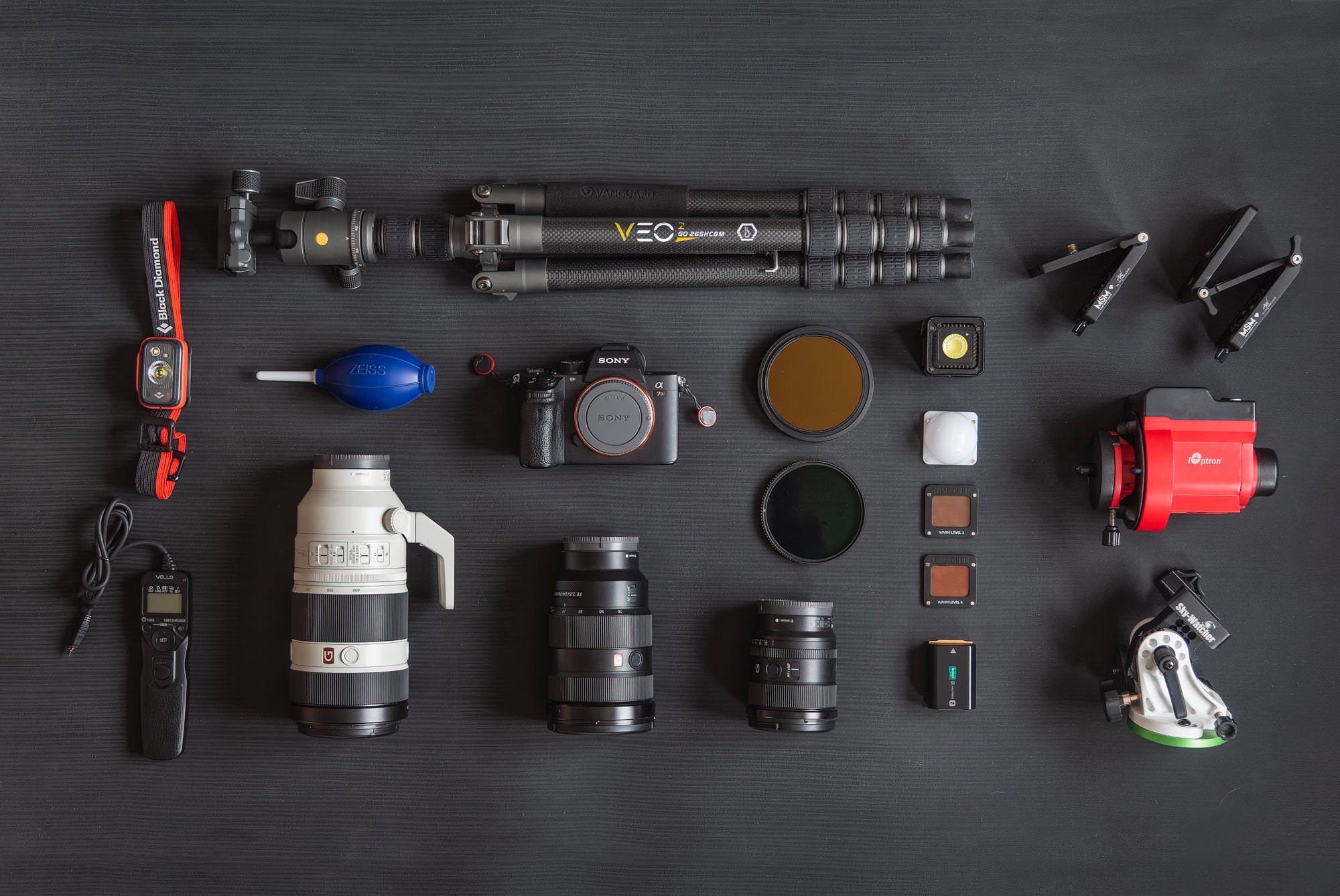
Photographer Matt Franklin packs this Sony Alpha camera, two zooms and a prime in his kit for capturing beautiful scenes on his travels.
Camera
Sony Alpha 7R III: I switched to Sony from a full frame Nikon camera about a year ago, and I landed on the Sony Alpha 7R III for its larger sensor, smaller body size, lighter weight, and most importantly, its performance in lower light. After using the camera for a year, however, one of the things I’ve come to like the most is how customizable the camera is to the individual user. In just one year, I know the functions of the Alpha 7R III better than the Nikon I used for the three years prior.
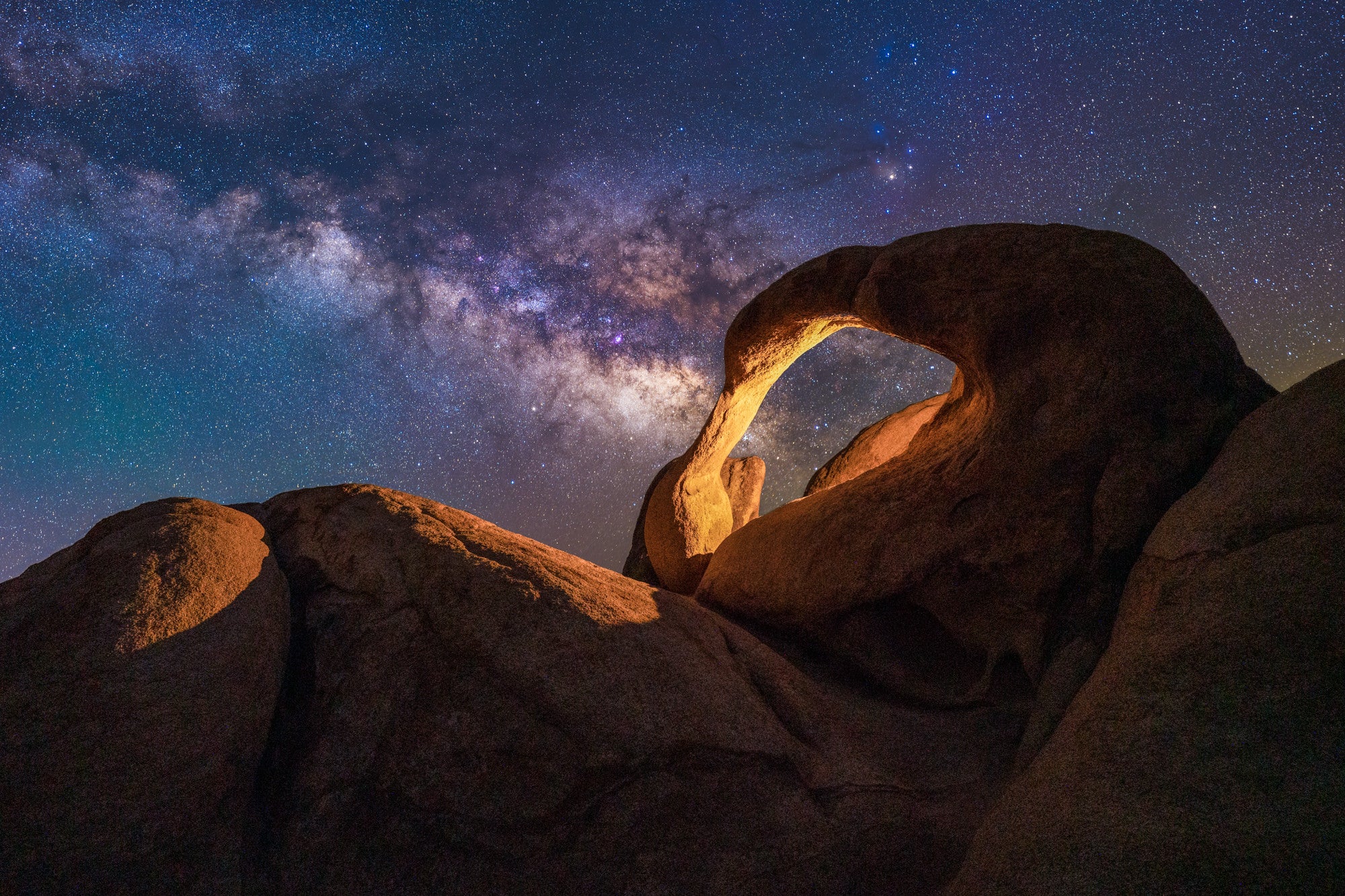
Photo by Matt Franklin. (Five Images Stacked) Sony Alpha 7R III. Sony 20mm f/1.8 G. iOptron SkyGuider Pro + LumeCube with Diffuser + Warming Filters. Foreground: 25 secs., f/4, ISO 6400, Sky: 121-secs., f/2, ISO 640
Lenses
Sony 24-70mm f/2.8 G Master: This was the first lens I purchased for the Alpha 7R III and it’s still the lens that stays on my camera in my bag most of the time, as most of what I shoot falls in these focal ranges. It’s an extremely versatile lens, and it’s incredibly sharp at every aperture setting. I used this lens exclusively for several months and found it great not just for landscapes and lifestyle shots but also for astrophotography. After years of shooting wide angle nightscapes, I have started to enjoy shooting longer focal length shots of the Milky Way. With a lens as sharp as this one at f/2.8 and the ability to shoot anywhere from 24mm to 70mm, I can capture incredible details in the Milky Way, especially when the setup is paired with a star tracker.
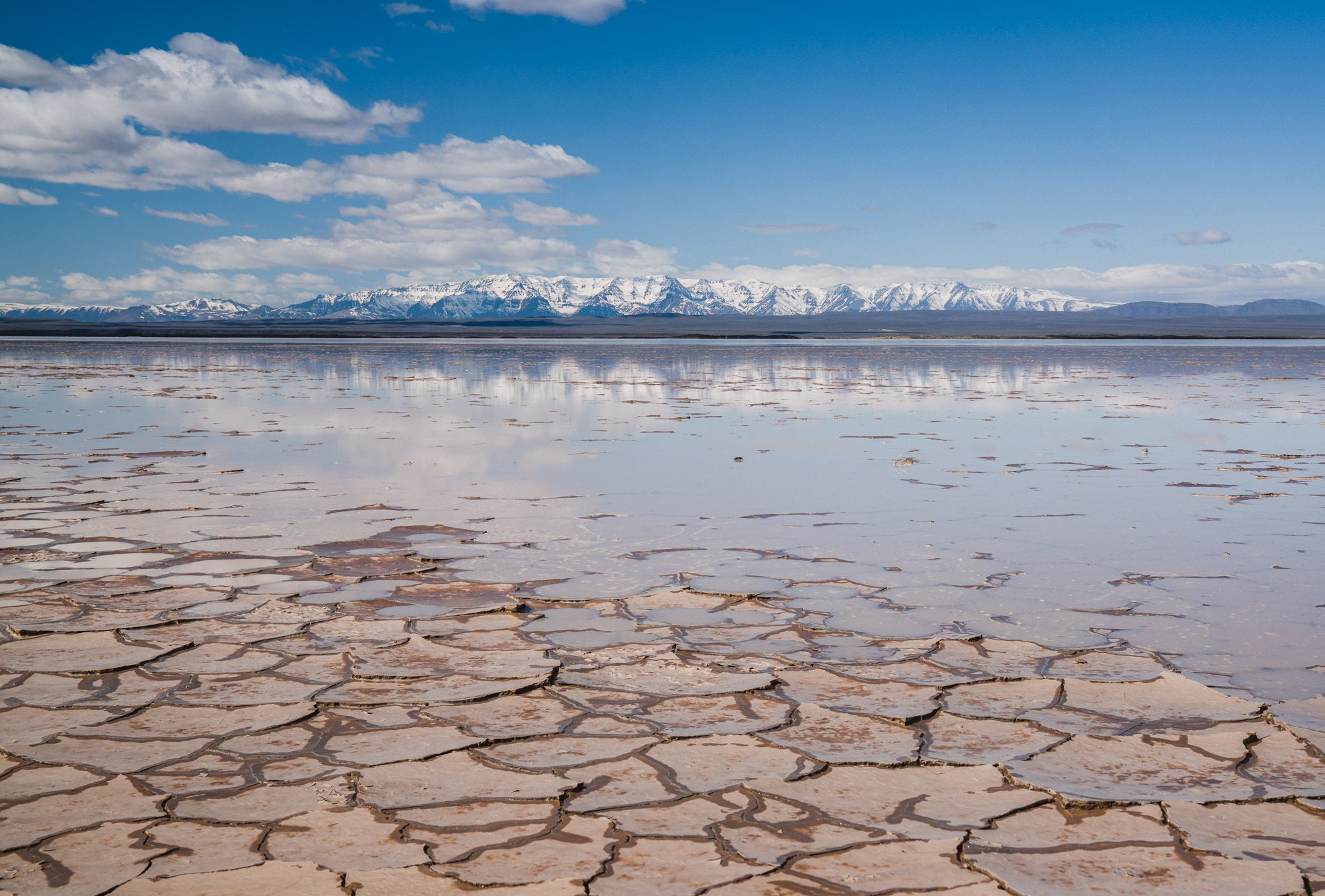
Photo by Matt Franklin. (Two Images Focus-Stacked) Sony Alpha 7R III. Sony 24-70mm f/2.8 G Master. 1/640-sec., f/7.1, ISO 100
Sony 20mm f/1.8 G: I purchased this lens last year and wondered almost instantly why I hadn’t purchased it sooner. I was right in the middle of moving toward longer focal lengths of the Milky Way and found 20mm to be the most common focal length I was shooting with my 14-24mm lens in the previous setup, so I jumped on buying this lens and never looked back. This lens has been an absolute game changer for me with the star tracker. On my previous setup, I had to flip the hardware on the mounting bracket of the star tracker for the counterweight and counterweight rod to produce enough torque to balance the camera. This forced me to polar align the star tracker with my camera upside down and created inaccuracy when flipping back to upright to shoot.
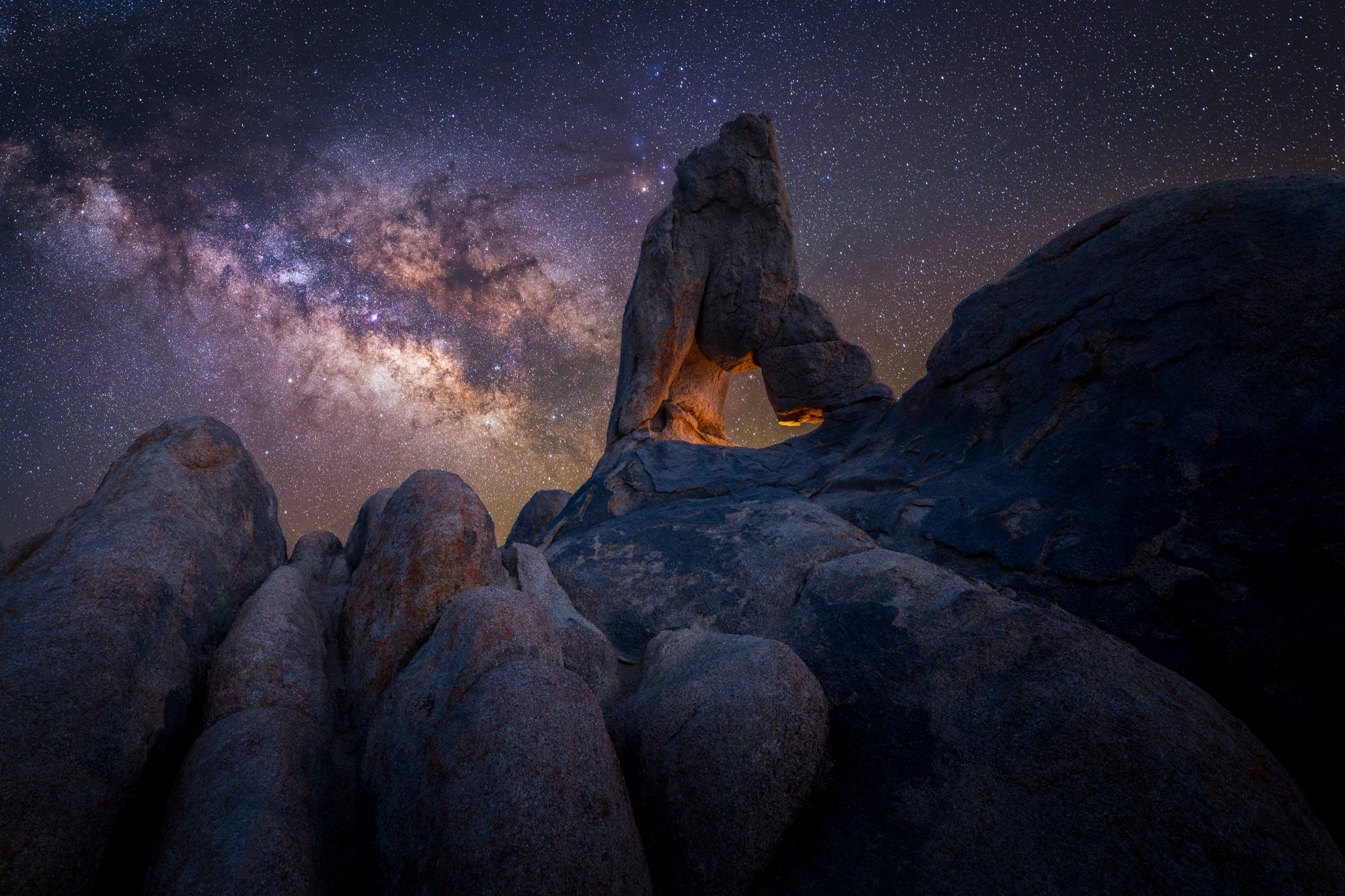
Photo by Matt Franklin. Sony Alpha 7R III. Sony 20mm f/1.8 G. iOptron SkyGuider Pro + LumeCube with Diffuser + Warming Filters. Foreground: 4-sec., f/8, ISO 200. Sky: 121-sec., f/8, ISO 200
The Sony Alpha 7R III and the 373-gram Sony 20mm f/1.8 G changed everything. These two paired together are so lightweight that I can use the star tracker without the mounting bracket, counterweight rod, and counterweight at all! This is huge for saving space in my bag as well as for not being stopped by airport security for the suspicious metal rod in my backpack! Star tracker aside, the 20mm lens’s f/1.8 aperture means I can also take brilliant single images at night with remarkably low ISOs. And while I purchased the lens for shooting at night, the wider angle provides wonderful perspective and I find so many of my favorite images in the past year were made with this lens.
Sony 100-400mm f/4.5-5.6 G Master: Coming from a previous camera setup where I carried a 24-120mm, an 80-200mm, and a 200-500mm, I thought for quite a long time about a better way to capture more of the focal lengths I needed for most of my work with the least amount of equipment. The 100-400mm f/4.5-5.6 GM has been the perfect compromise so far, as it has the reach to capture wildlife but is also wide enough for shooting landscapes. Living the mountains of Eastern Oregon, I use this lens frequently to create visual compression, giving viewers a sense of scale of the mountains as well as to pick out small, intimate scenes in a grand vista.
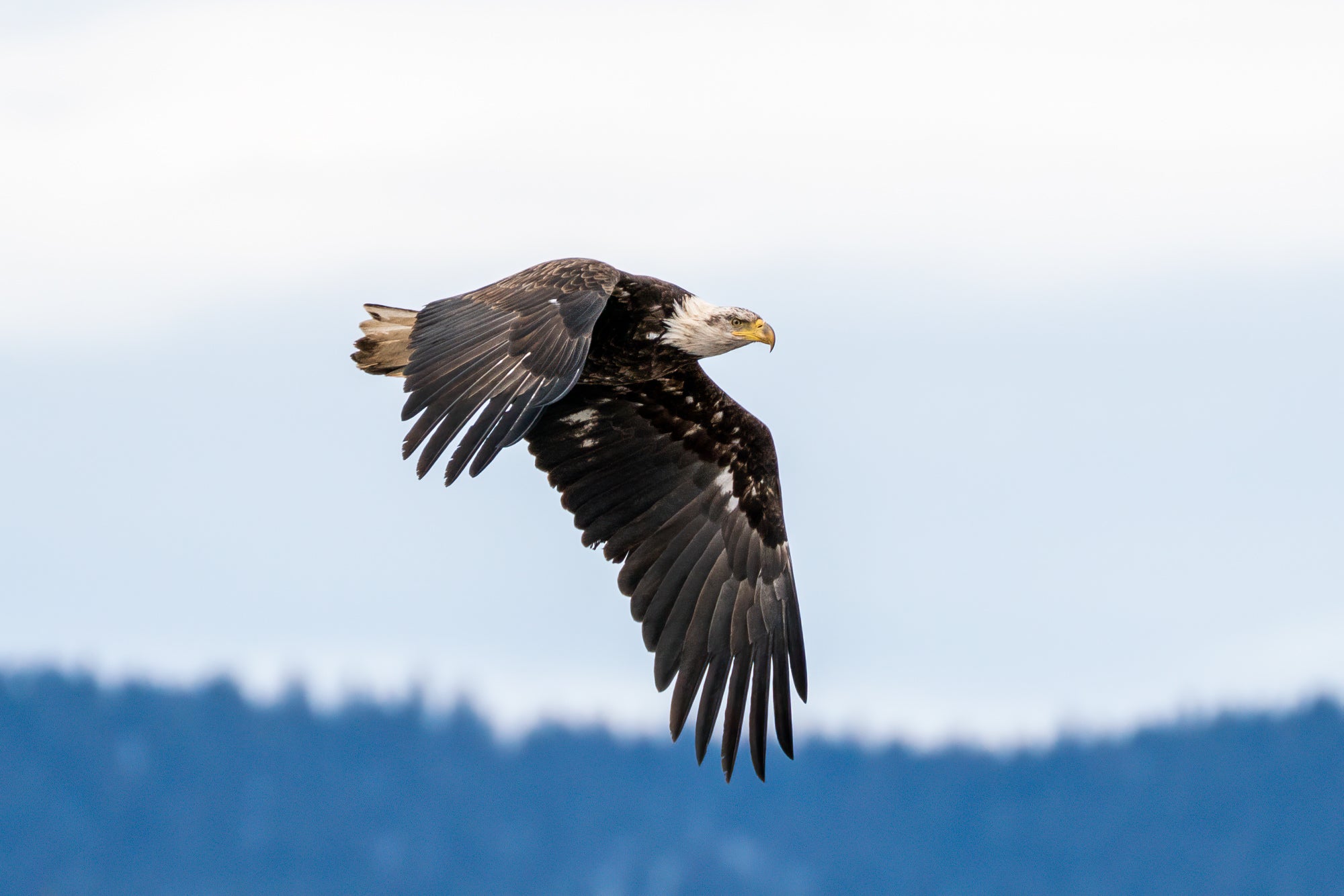
Photo by Matt Franklin. Sony Alpha 7R III. Sony 100-400mm f/4.5-5.6 G Master. 1/2500-sec., f/5.6, ISO 400
Accessories
Vanguard VEO 265HCBM Carbon Fiber Tripod: You can’t take two-minute-long photos of the stars without a tripod to keep the camera still, and this one does the trick. It’s tall enough to use at eye level without stooping down, sturdy enough to hold all of my star tracking and camera equipment without complaint, and light enough to carry miles out on the trail strapped to the side of my pack.
iOptron Skyguider Pro + Skywatcher Star Adventurer Wedge Base: This is my primary and longest-used star tracker setup. These two paired with the Sony Alpha 7R III and 20mm f/1.8 G make for a great combination to capture single exposures of the Milky Way lasting 3 minutes or longer with perfectly sharp stars.
MSM V and Z Brackets: Although I’ve only recently purchased these, they absolutely deserve a space in my bag for night photography. The V and Z brackets have been game changers for readjusting the tripod head to reduce torque on the star tracer following a series of exposures. The quick adjustments and greater degrees of freedom allowed the head to make for a much easier time creating Milky Way panoramas. Moreover, the V or Z bracket can be used in place of the SkyWatcher Star Adventurer Wedge base which can save extra space and weight in the pack.
Vello Shutterboss II: While I absolutely love the Sony Alpha 7R III’s internal intervalometer and use it frequently for timelapse photography, it does not allow for shutter speeds longer than thirty seconds. The Shutterboss II is a great external intervalometer that allows me to capture those longer exposures of the night sky with the star tracker.
Black Diamond Headlamp: Having a headlamp with a red light option is extremely helpful for adjusting camera settings in the dark. Switching to red light helps reduce the adjustment time on my eyes when transitioning back to darkness after switching the headlamp off. Having a headlamp is pretty important for a nightscape photographer in general, as those hikes-out are much more difficult in pitch black.
Lume Cube 2.0 + Warming and Diffusion Filters: I’ve used this little light for years to add an element of interest in the foreground of my night photos. Initially, photographing the Milky Way was all about the stars for me, but over the past few years the foreground has become one of the most important aspects of the image. The foreground is what connects the viewers’ to the experience of the stars and stokes their imaginations.
Zeiss Air Blower: I take this thing wherever I take the camera to keep the dirt, dust, etc. off of the front of my lens.
Polar Pro Circular Polarizer and Variable ND filter: The polarizer is frequently on the front of my 24-70mm f/2.8 to cut glare from water, snow, or wet foliage and bring out the rich colors underneath. I use the variable ND to create longer exposures and/or cut down on harsh light.
See more of Matt Franklin's work on Instagram @mattfranklinphoto.

















